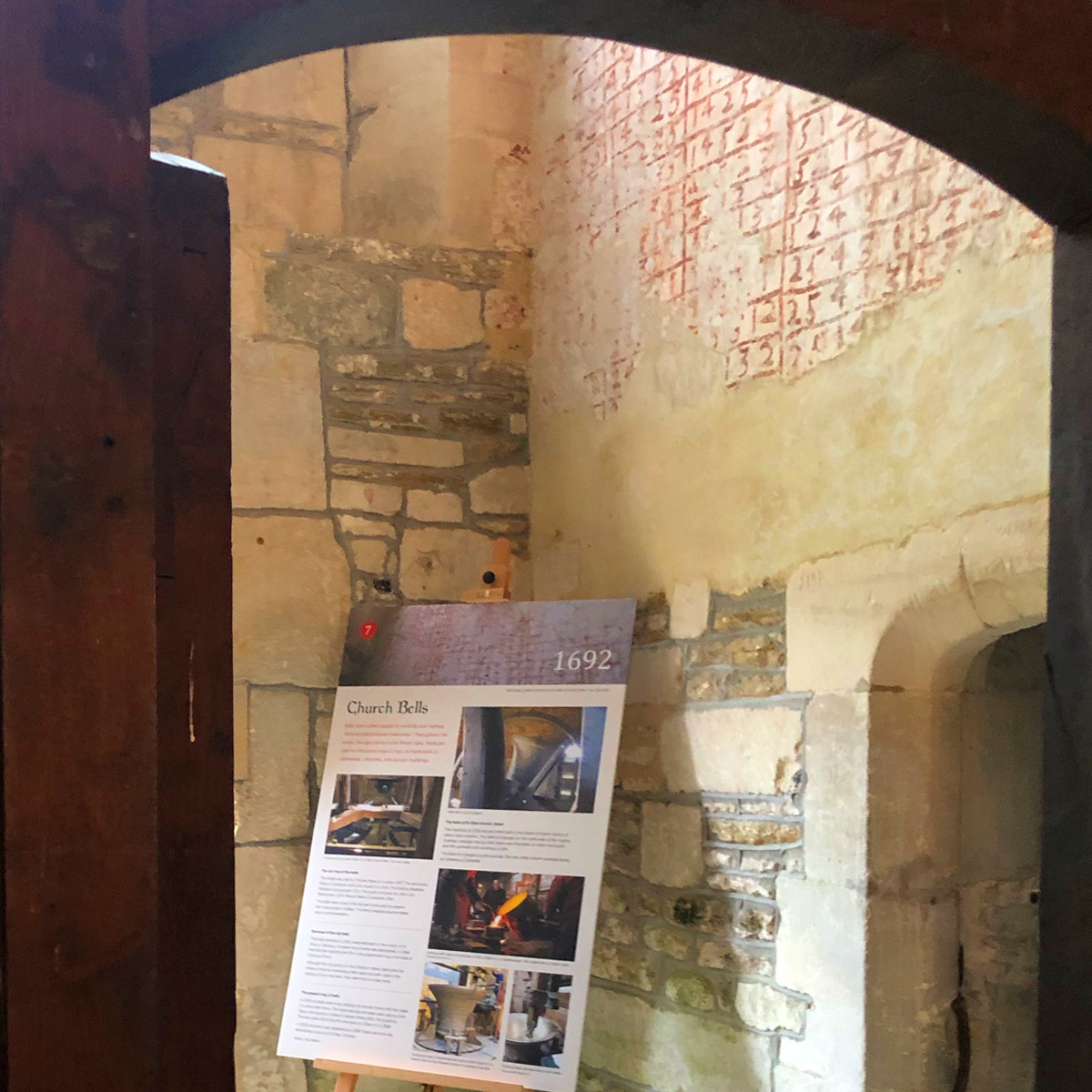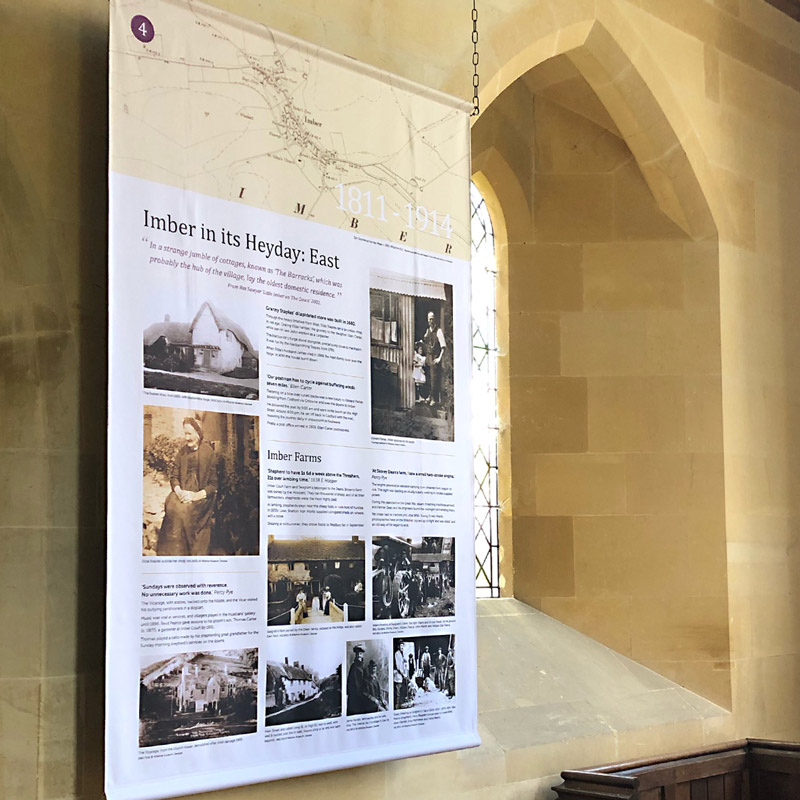Remembering Imber
The earliest records of a settlement at Imber date from 967, though there is evidence for habitation from 1000BC. For many years life was simple and the population small numbering just 50 in 1086, climbing to near 450 in 1851 at its peak. Military activity began in 1897 as the War Office began buying up farmland. The village was evacuated in November 1943 to facilitate training of American troops for the D-Day landings.
“…the residents were evicted just before Christmas 1943, never to return…”
Interpretation panels and banners
Imber represents but a small gem in English heritage. It is a tale of curiosity and a snapshot of remote rural life as it once was. Our role was to develop interpretation panels to capture the stories of Imber life, to be displayed at the church of St Giles, one of the few remaining and safe buildings.
Working with local volunteer, Peter Lankester, the Churches Conservation Trust and interpretation specialist Rowena Riley, we prepared a series of themed panels. These were mounted on free-standing easels, for the older parts of the church where interventions are not permitted, with larger hanging banners in the newer chancel, to make in the most of the available space.
St Giles is a grade 1 listed building and so interpretation needed to be applied sensitively. Easels are stable and portable, in fact, all of the information panels are designed to be removable to allow for renovation work, or storage elsewhere during the damp winter months. The panel sets were supplied with waterproof protective covers precisely for this purpose.















